Topology Management
Since Apache Eagle 0.4.0-incubating. Apache Eagle will be called Eagle in the following.
Application manager aims to manage applications on EAGLE UI. Users can easily start/start topologies remotely or locally without any shell commands. At the same, it should be capable to sync the latest status of topologies on the execution platform (e.g., Storm1 cluster).
This tutorial will go through all parts of application manager and then give an example to use it.
Design
Application manager consists of a daemon scheduler and an execution module. The scheduler periodically loads user operations(start/stop) from database, and the execution module executes these operations. For more details, please refer to here.
Configurations
The configuration file eagle-scheduler.conf defines scheduler parameters, execution platform settings and parts of default topology configuration.
-
Scheduler properties
Property Name Default Description appCommandLoaderEnabled false topology management is enabled or not appCommandLoaderIntervalSecs 1 defines the interval of the scheduler loads commands appHealthCheckIntervalSecs 5 define the interval of topology health checking, which syncs the topology execution status from storm cluster to Eagle -
Execution platform properties
Property Name Default Description envContextConfig.env storm execution environment, only storm is supported envContextConfig.url http://sandbox.hortonworks.com:8744 storm ui envContextConfig.nimbusHost sandbox.hortonworks.com storm nimbus host envContextConfig.nimbusThriftPort 6627 storm nimbus thrift port envContextConfig.jarFile TODO storm fat jar path -
Topology default properties
Some default topology properties are defined here.
Playbook
-
Editing eagle-scheduler.conf, and start Eagle service
# enable application manager appCommandLoaderEnabled = true # provide jar path envContextConfig.jarFile = # storm nimbus envContextConfig.url = "http://sandbox.hortonworks.com:8744" envContextConfig.nimbusHost = "sandbox.hortonworks.com"For more configurations, please back to Application Configuration.
After the configuration is ready, start Eagle servicebin/eagle-service.sh start. -
Go to admin page

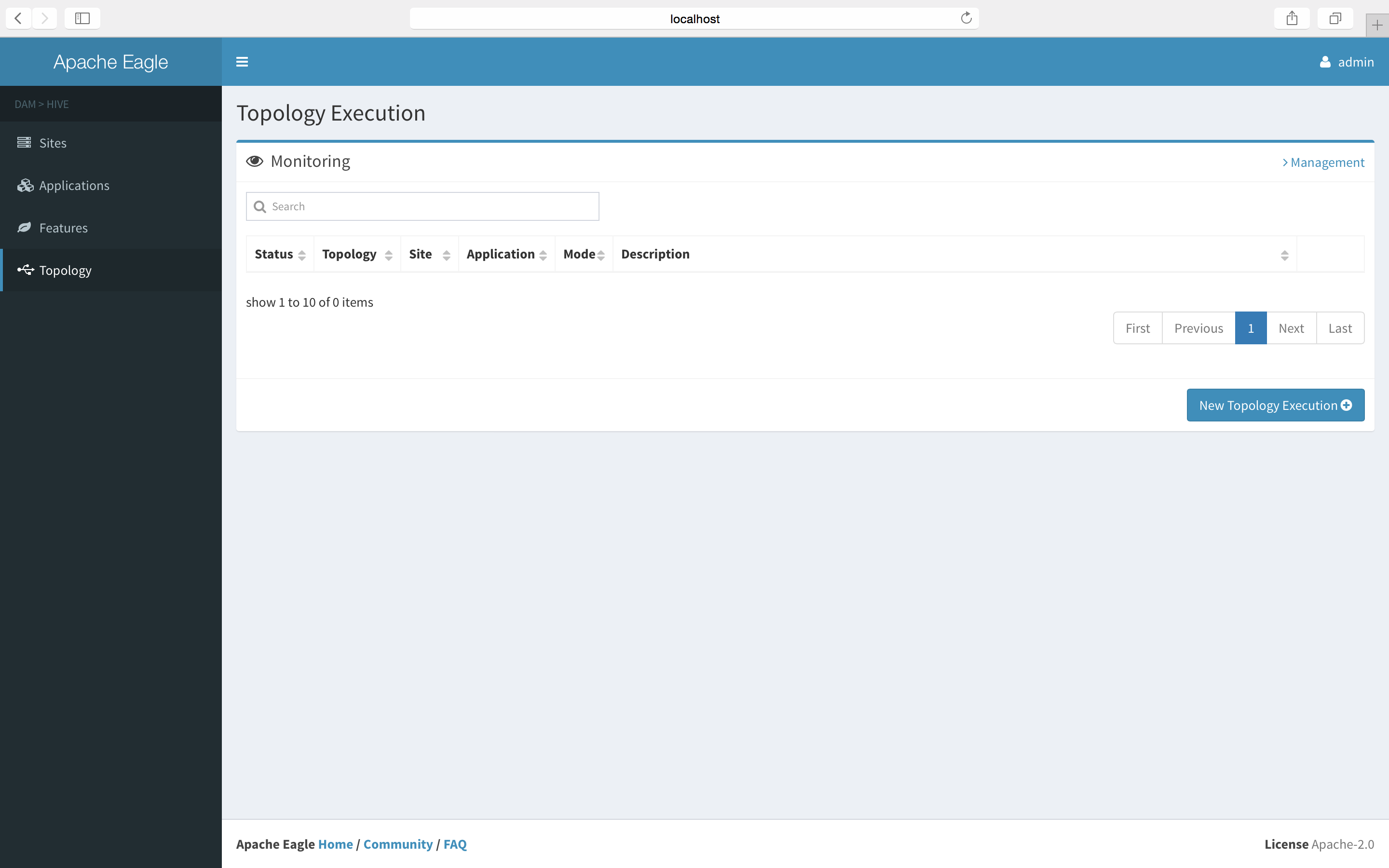
- Go to management page, and create a topology description. There are three required fields
- name: topology name
- type: topology type [CLASS, DYNAMIC]
- execution entry: either the class which implements interface TopologyExecutable or eagle DSL based topology definition
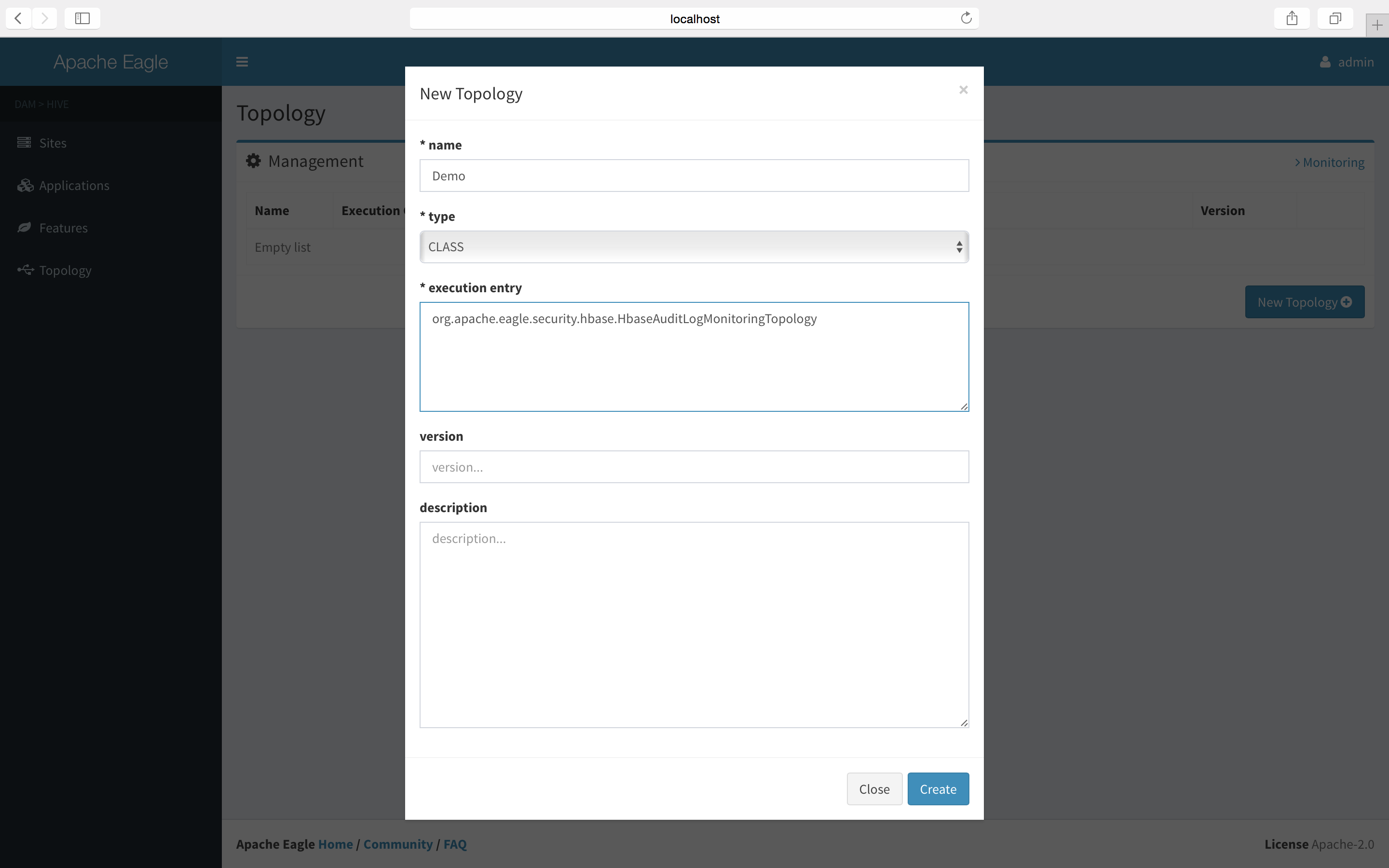
-
Back to monitoring page, and choose the site/application to deploy the topology
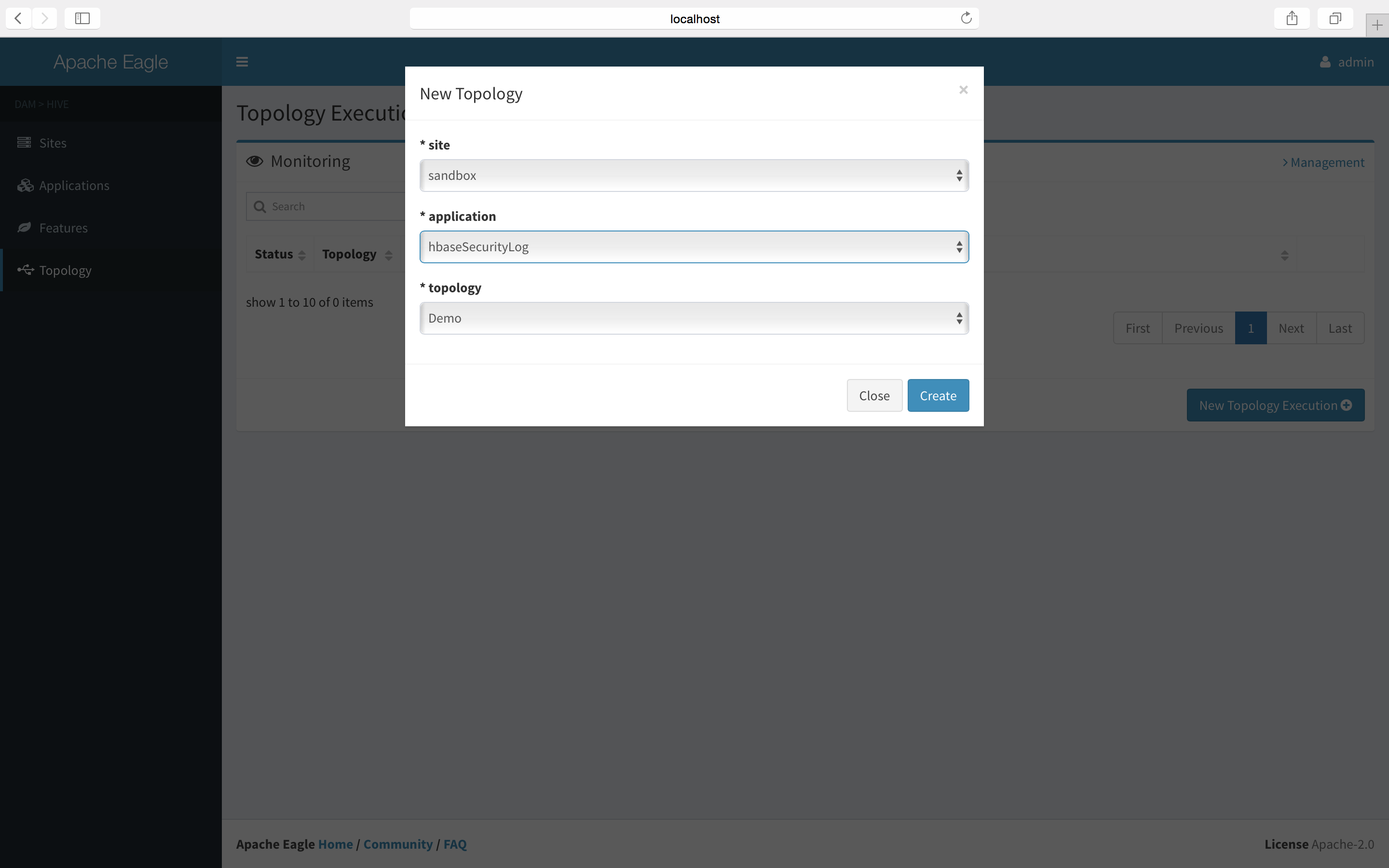
-
Go to site page, and add topology configurations.
NOTICE topology configurations defined here are REQUIRED an extra prefix
.appBlow are some example configurations for [site=sandbox, applicatoin=hbaseSecurityLog].
classification.hbase.zookeeper.property.clientPort=2181 classification.hbase.zookeeper.quorum=sandbox.hortonworks.com app.envContextConfig.env=storm app.envContextConfig.mode=cluster app.dataSourceConfig.topic=sandbox_hbase_security_log app.dataSourceConfig.zkConnection=sandbox.hortonworks.com:2181 app.dataSourceConfig.zkConnectionTimeoutMS=15000 app.dataSourceConfig.brokerZkPath=/brokers app.dataSourceConfig.fetchSize=1048586 app.dataSourceConfig.transactionZKServers=sandbox.hortonworks.com app.dataSourceConfig.transactionZKPort=2181 app.dataSourceConfig.transactionZKRoot=/consumers app.dataSourceConfig.consumerGroupId=eagle.hbasesecurity.consumer app.dataSourceConfig.transactionStateUpdateMS=2000 app.dataSourceConfig.deserializerClass=org.apache.eagle.security.hbase.parse.HbaseAuditLogKafkaDeserializer app.eagleProps.site=sandbox app.eagleProps.application=hbaseSecurityLog app.eagleProps.dataJoinPollIntervalSec=30 app.eagleProps.mailHost=some.mail.server app.eagleProps.mailSmtpPort=25 app.eagleProps.mailDebug=true app.eagleProps.eagleService.host=localhost app.eagleProps.eagleService.port=9099 app.eagleProps.eagleService.username=admin app.eagleProps.eagleService.password=secret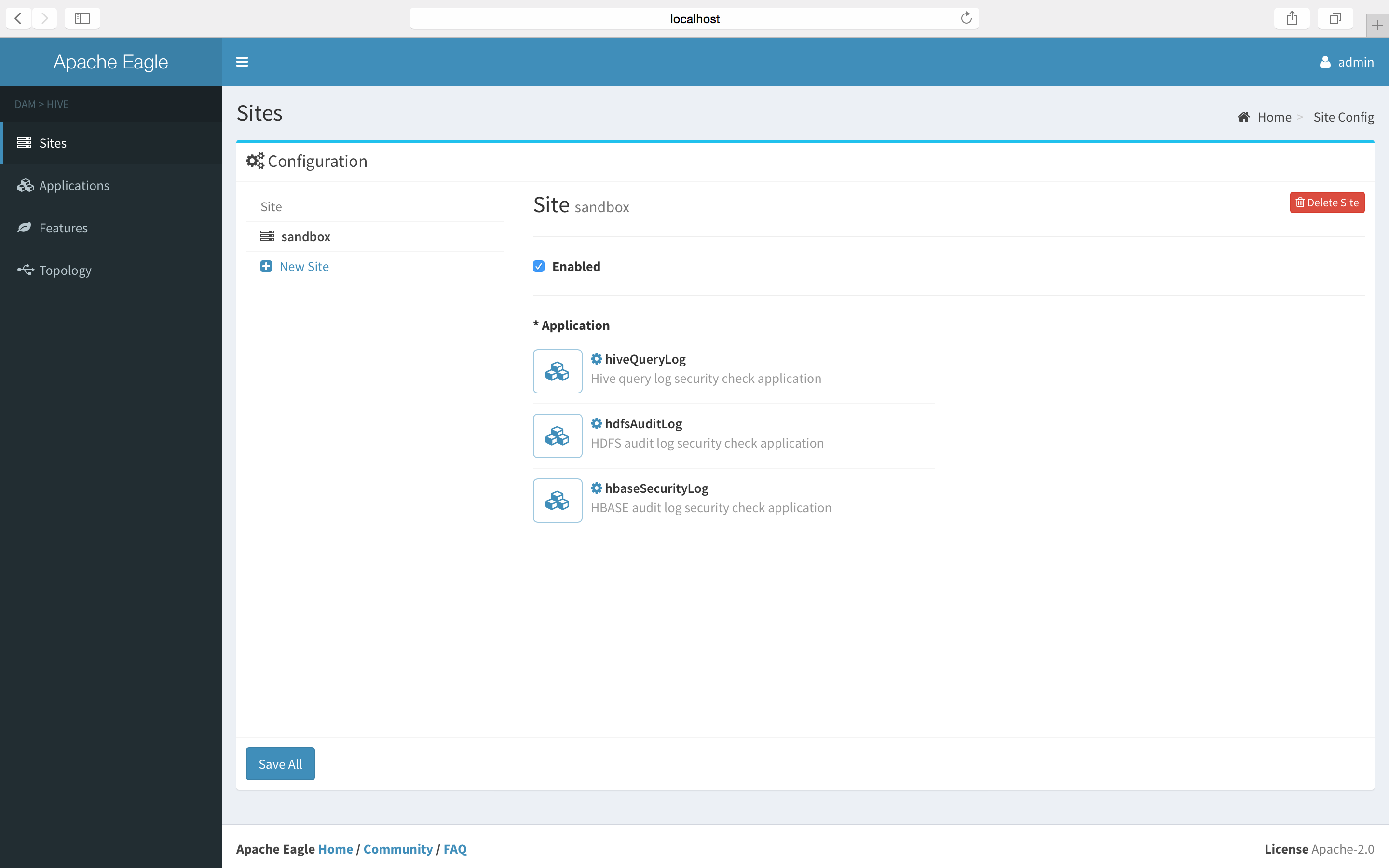
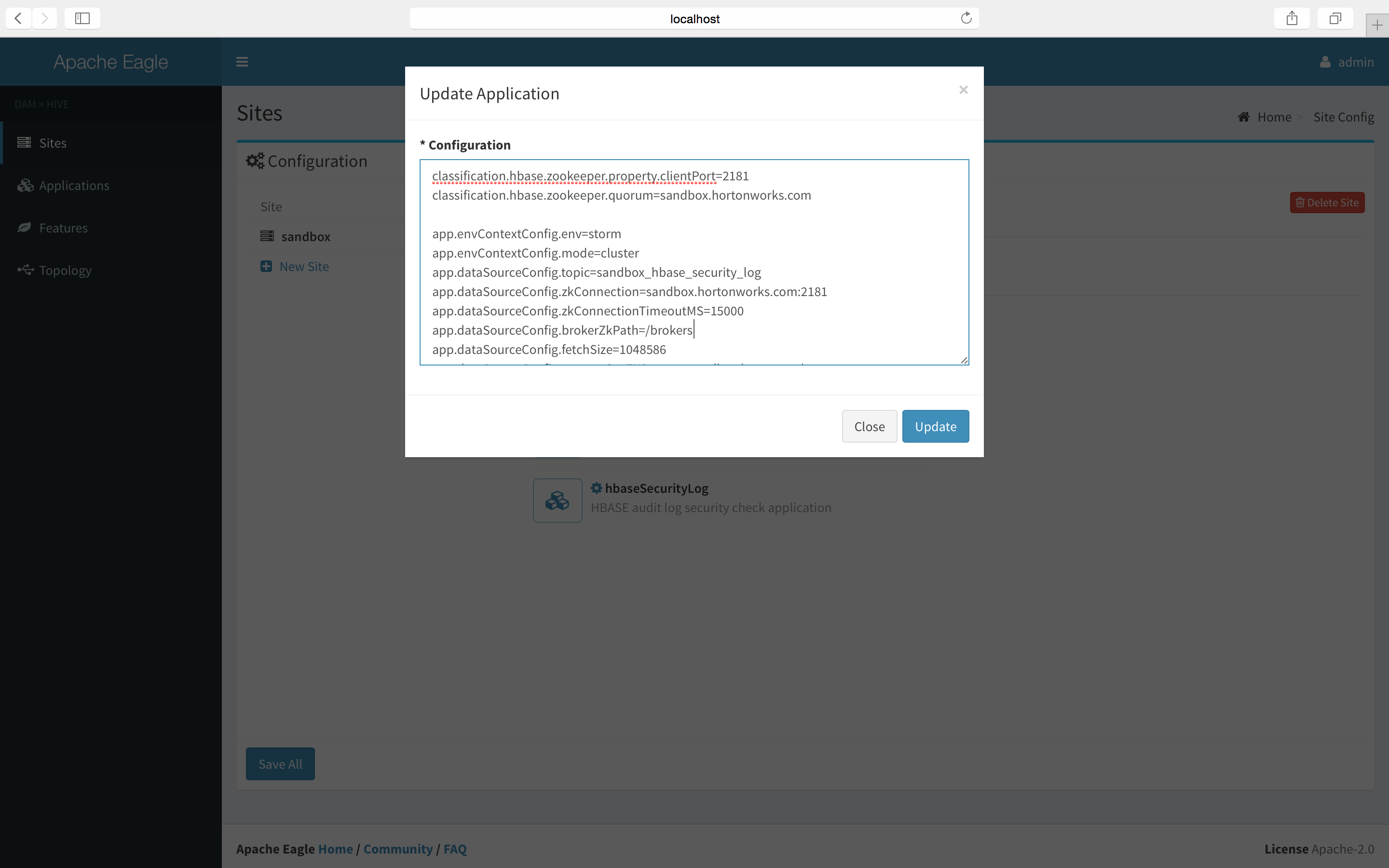
-
Go to monitoring page, and start topologies

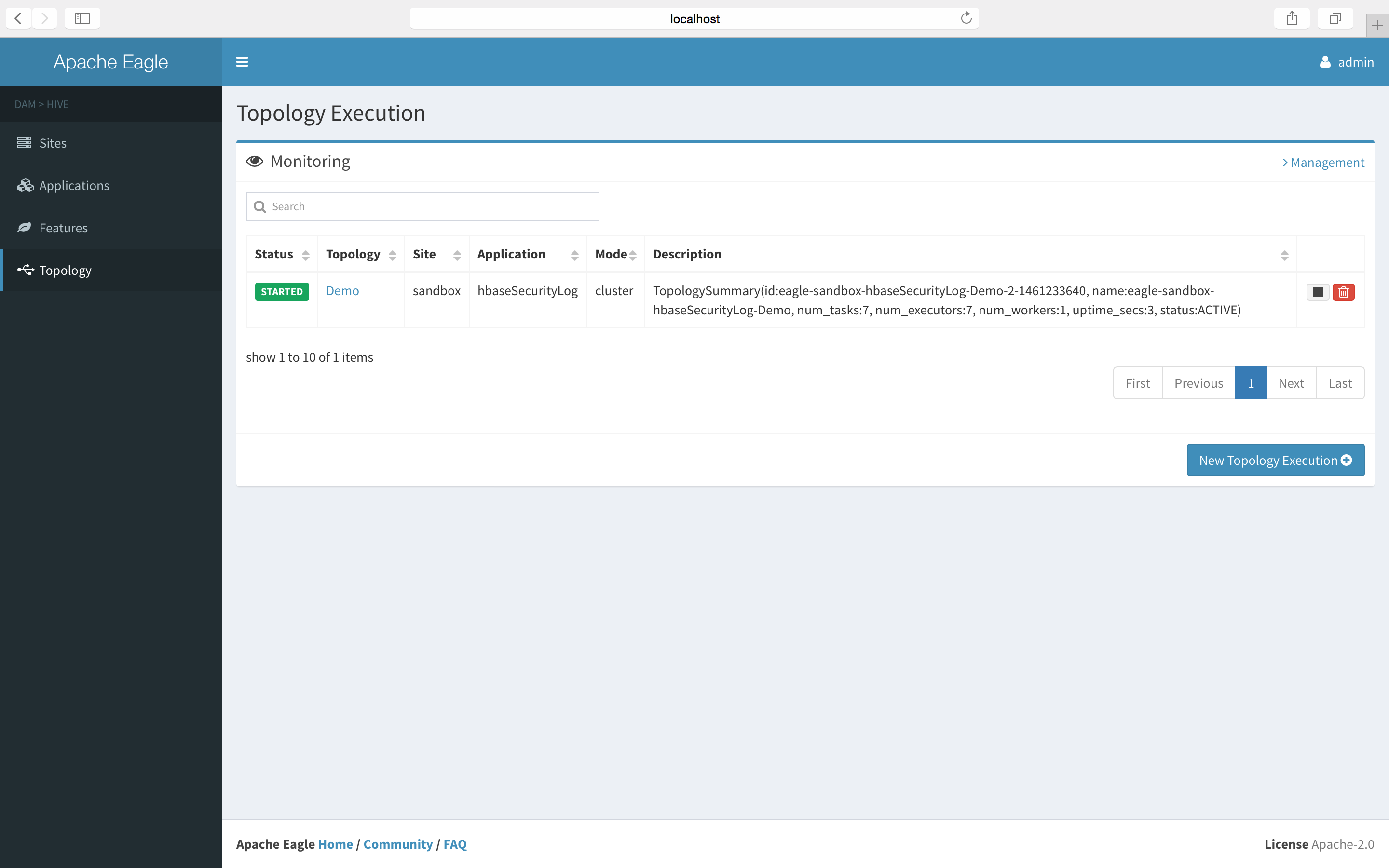
- stop topologies on monitoring page

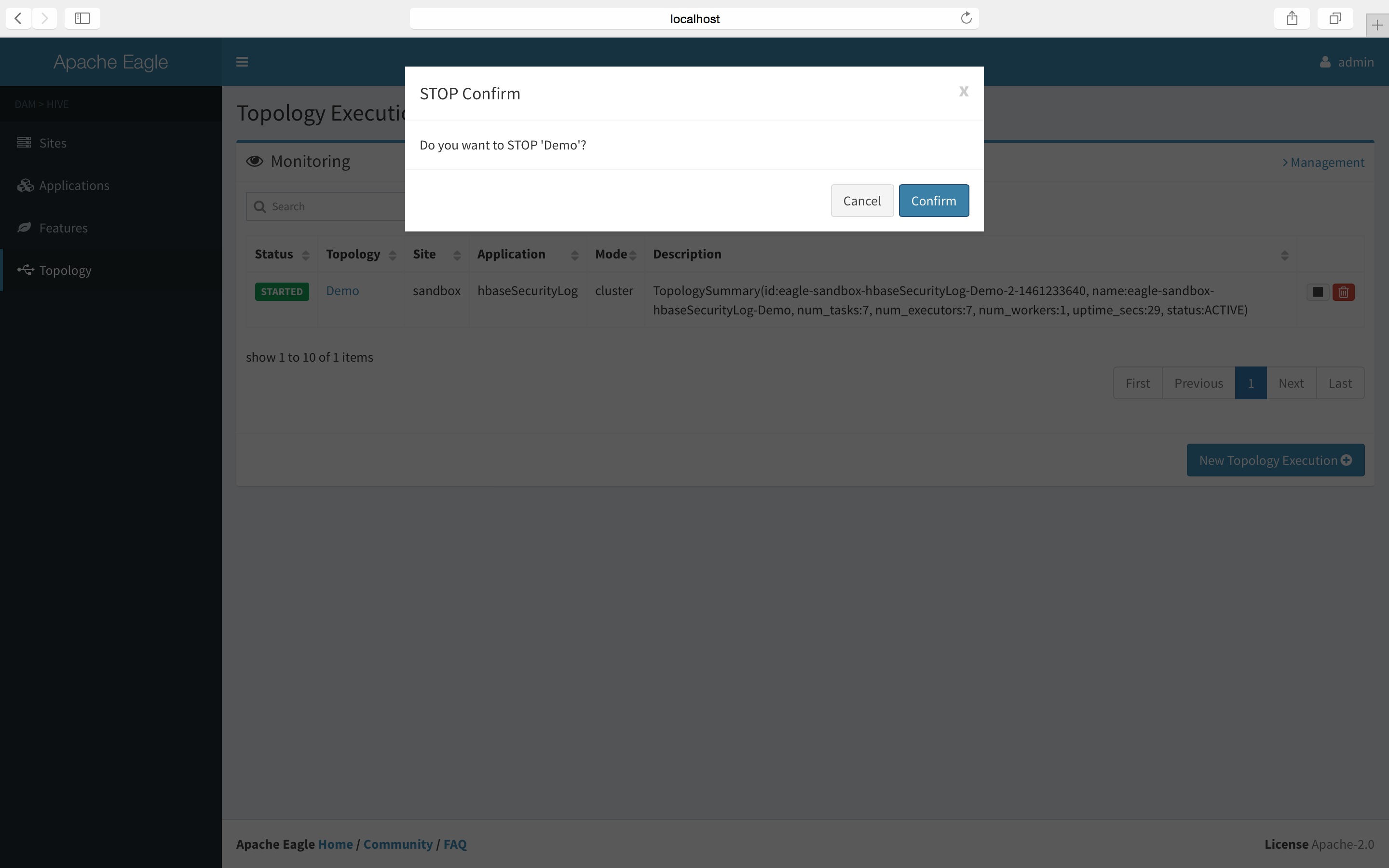
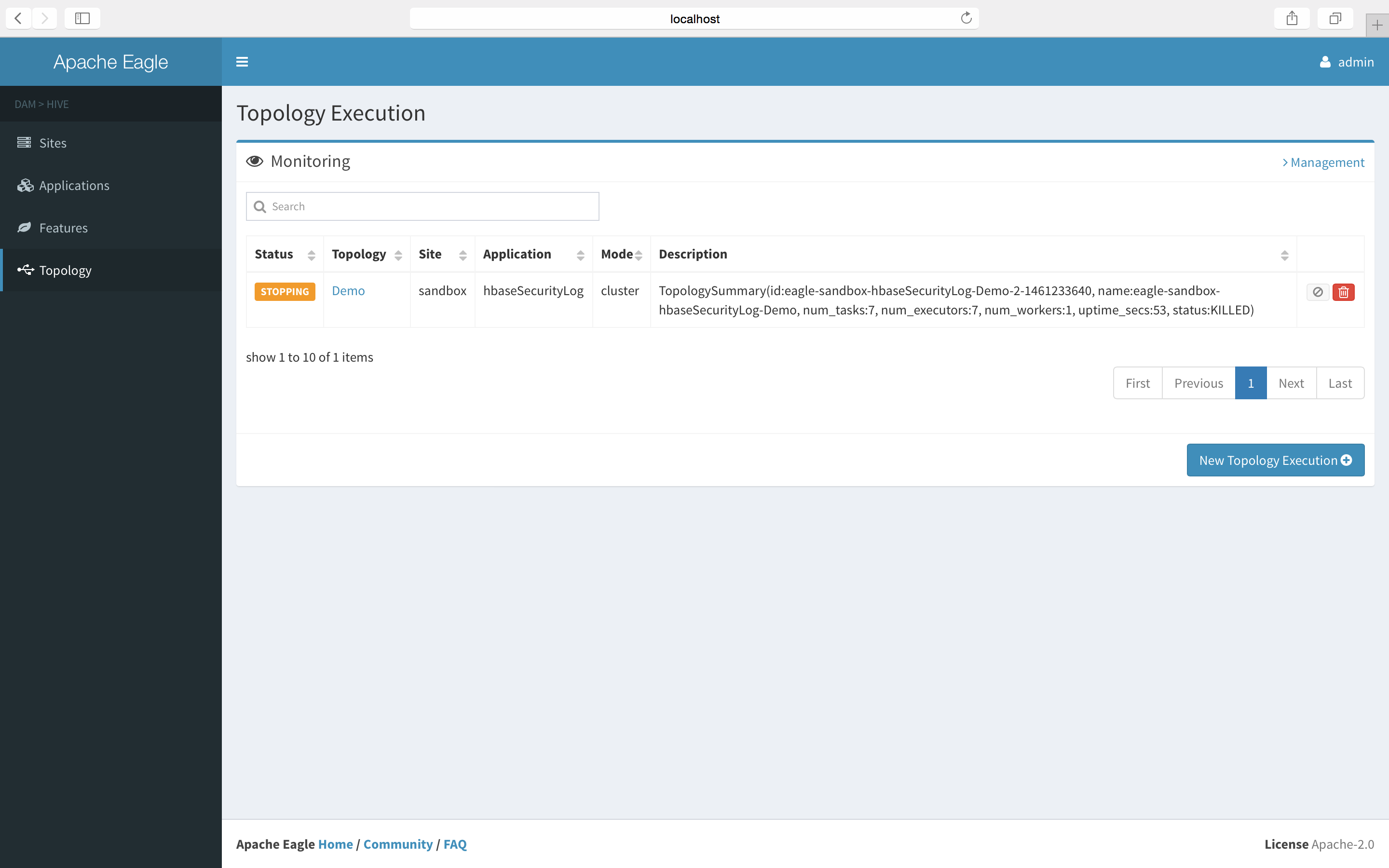
Footnotes
-
All mentions of “storm” on this page represent Apache Storm. ↩


